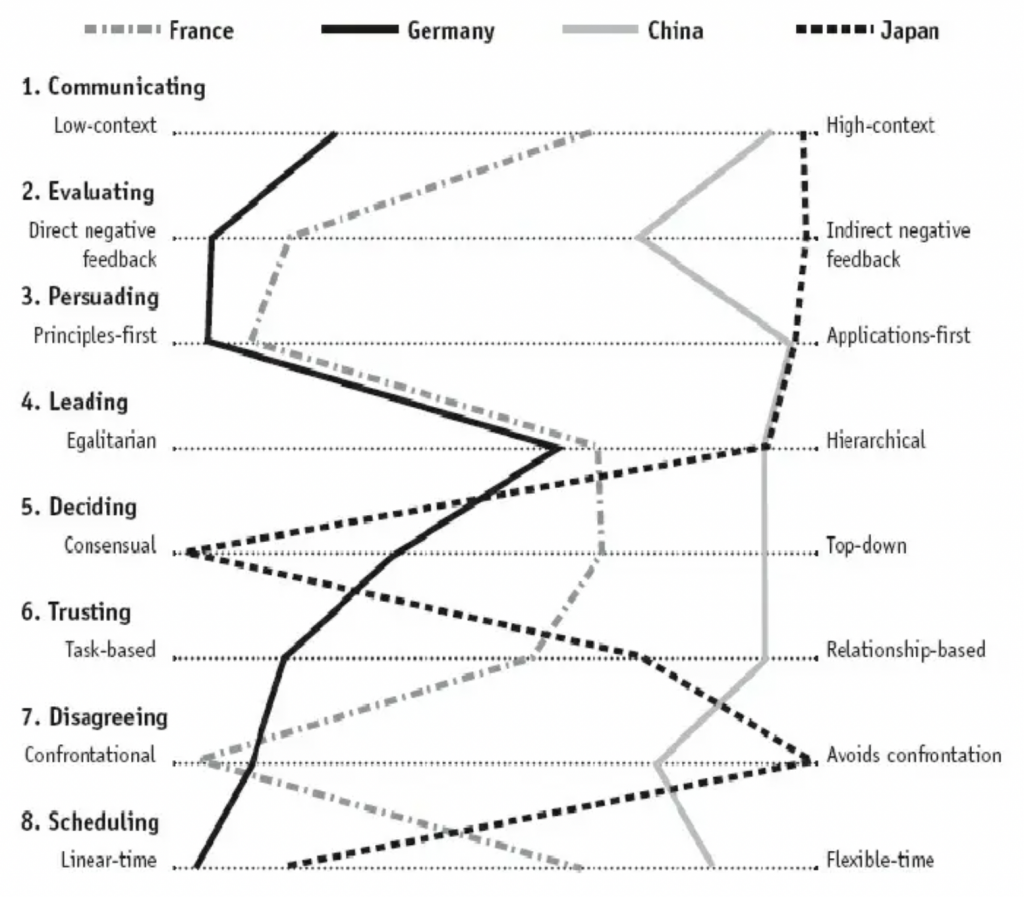
We are currently living in the times when the global workforce is becoming a norm and the role of HR is to support and guide managers and employees to build a great team culture that sustains growth and innovation.
The COVID pandemic has accelerated what globalization started years ago – the rise of multicultural teams. At the same time bringing the best out of diversity, equity and inclusion. Company culture thrives in diverse environments due to the different perspectives, backgrounds, mindsets, behaviors, values, beliefs, ways of doing things etc.
As a result, when forming a multicultural team, our differences are more than just what we eat, our time zone or our customs. Cultural differences influence the way we interact and create rapport with each other.
Cultural differences influence the way we interact and create rapport with each other.
The role HR professionals play in building a team culture
Depending on the company objectives, of course the role of HR will differ. However, if a company looks for growth, adaptability and resilience when dealing with change management, it is crucial to focus on building diverse and high-performing teams.
Because yes, we’ve experienced it a lot lately (and more will most probably come). Multicultural teams require more work and effort to bring everyone on the same page. However once it’s done creativity, diversity, innovation and other benefits will flow.
Create awareness amongst teams
In the book “The culture map“, Erin Meyer, a professor at INSEAD, mapped the world’s cultures into 8 scales. She focused on “decoding how people think, lead, and get things done across cultures”.
Here’s an example of what a culture map looks like and what information it includes:

Source: The Culture Map, Erin Meyer
Hence, each scale (communicating, evaluating, persuading, leading, deciding, trusting, disagreeing and scheduling) has two extremes between which every country is mapped. All these 8 scales are crucial in observing team dynamics and then acting upon.
Bringing awareness within the team members about these differences will create more room for compassion, care and mutual understanding.
Help teams identify their differences
As an example, let’s take the communicating scale from the figure above. Low-context cultures perceive communication as precise, simple, clear and straight to the point, as it is. Blue means blue. However, in high-context cultures good communication is layered and “messages are both, spoken and read between the lines”.
In other words, if we have a multicultural team with colleagues from Germany or US (low-context cultures) and Japan, Romania or Russia (high-context cultures) chances are high for conflicts to arise.
Nothing wrong with either low-context or high-context cultures. Every colleague brings valuable input for the relationship. This is the reason why it is so important to decode the message first. And then establish a team culture everyone contributes to and feels a strong sense of belonging.
In conclusion, a helpful strategy in a multicultural team is to actually follow the low-context cultures approach. In other words, when the team is forming, create together a team identity. Then, establish ground rules on how you altogether prefer doing the things within your tribe? And what message do you want to send outside of it?
In a multicultural team is to actually follow the low-context cultures approach, where good communication is precise, simple and clear
Awareness is the first step
Another example for the above map comes from the author herself:
“Next, take a closer look at scales five (Deciding) and eight (Scheduling), and you’ll see the likely source of the frustration on your team. Although Japan, like China, is very hierarchical (scale four, Leading), it’s a consensual society where decisions are often made by the group in a bottom-up manner. That means decisions take longer, as input from everyone is gathered and a collective decision is formed. By contrast, in China, decisions are most often made by the boss in a top-down fashion (scale five, Deciding).”
Hence, the difficulties in working together as a team. The good news is that you can avoid this kind of difficulty by creating awareness at first. Following by discussing together strategies on how to approach them.
Consider a team culture assessment
Next time you launch a team culture assessment, consider designing and including a section to take the pulse of beliefs, customs, values and social behaviors of your colleagues’ origins. After mapping the results, help managers and the entire team understand what else drives human behavior and thinking.
Be open with your colleagues on why you designed this assessment. Keep a high transparency level on who has access to this sensitive information and how it will be used. Participation in these assessments should be optional and with the only purpose of understanding and improving the team dynamics.
Suggested questions: learn about demographics
- Where were you born or lived the most?
Undoubtedly, you can stop here, map your team and rely only on the findings described and identified by Erin Meyer in her research. Or, you can customize and dive dipper into the specifics of your own team.
For example, let’s say you are looking into understanding and improving the communication within the team. Some of the questions useful to ask are:
- How would you describe good communication? Give an example of a situation when you experienced a good way of communicating (within the team, company or outside)? How would you describe a bad example of communication?
- Please choose your definition of a good communication: a. precise, simple and clear; b. layered, contextual, messages are both, spoken and read between the lines. How do you think each option above impacts our team’s collaboration and evolution?
Final thoughts
Indeed, the cultural differences do not cover the absolute truth. Beside the culture, an important impact on how we interact has also our personality types, education, backgrounds, emotional maturity etc. However, cultural differences can be a useful starting point for developing teams that partner with one another. And instead of unhealthy competition, develop trusting and long lasting relationships.
The truest high-performing teams are great when things go south and sideways. You can't make anybody trust you. All you can do is behave in a way that allows them to make a decision to trust you.
Start building trust by looking at the attributes of your team members, and by acknowledging their (cultural and other) differences. Help managers to make the best out of those differences and turn them into an ally. Here’s where you, as an HR professional can bring the most powerful change and insight.










